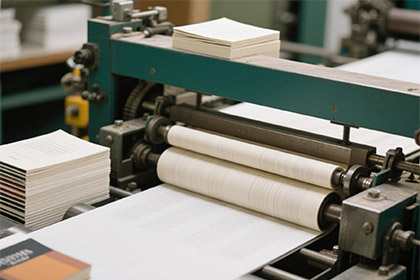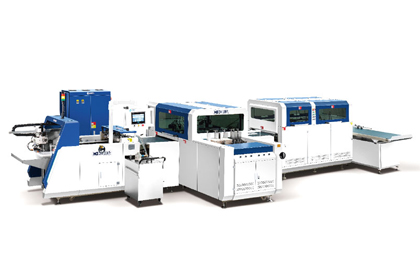The creation of a book is a fascinating journey that blends art, technology, and craftsmanship. It's a process that transforms a simple manuscript into a tangible, cherished item that can transport readers to different worlds.
Book manufacturing process starts with editing and layout design. Then comes printing (offset, digital, etc.). Next is binding (sewing or gluing), followed by finishing touches like jacketing and quality checks before packaging.
Pre - production
- Editing and proofreading: The manuscript is carefully edited for content, grammar, and style. It is then proofread to catch any remaining errors.
- Design and layout: Designers work on the book's cover and interior layout. They choose fonts, determine the page size and margins, and arrange the text and illustrations in an aesthetically pleasing and readable way.
Printing

- Typesetting: The text is converted into a digital format suitable for printing. This involves setting the typefaces, sizes, and line spacing according to the design specifications.
- Printing: There are different printing methods, such as offset printing, digital printing, and ink - jet printing.
- Offset printing: It is commonly used for large - scale book production. The image on a printing plate is transferred (offset) onto a rubber blanket and then onto the paper. This method provides high - quality prints with accurate color reproduction and is cost - effective for large print runs.
- Digital printing: It is suitable for short - run productions and allows for quick turnaround times. The digital file is sent directly to the printer, which deposits ink or toner onto the paper. It offers more flexibility in terms of customization and on - demand printing.
- Ink - jet printing: Similar to digital printing, it uses ink - jet technology to print the text and images on the paper. It can produce high - quality results, especially for color - rich and detailed content.
Binding
- Folding: The printed sheets are folded into signatures, which are groups of pages that will form the book.
- Sewing or gluing: The signatures are either sewn together along the spine or glued with a strong adhesive. Sewing is more durable and is often used for hardcover books, while gluing is common for paperback books.
- Trimming: The edges of the book block are trimmed to give it a neat and uniform appearance.
- Attaching the cover: The cover, which may be made of paper, cardboard, or other materials, is attached to the book block. For hardcover books, the cover is usually made of thicker cardboard and covered with a decorative material such as cloth or paper. The book block is inserted into the cover, and the edges are often taped or glued to hold it in place.
- During this period, we usually use Automatic Hardcover Case Making Machine to complete the whole process.

Finishing touches
- Jacketing or laminating: A dust jacket, which is a removable paper cover, may be added to hardcover books for protection and decoration. Laminating can also be done to protect the cover and give it a glossy or matte finish.
- Barcoding and labeling: A barcode is added to the back cover for inventory and sales purposes. Labels with the book's title, author, and other relevant information may also be attached.
- Quality inspection: The finished books are inspected for any defects, such as printing errors, binding problems, or damaged covers. Any faulty books are removed and corrected or discarded.
In conclusion, the book manufacturing process is a complex and intricate one, involving multiple stages and the expertise of many professionals. From the initial editing to the final packaging, every step is designed to create a product that not only contains valuable content but is also a pleasure to hold and read.
